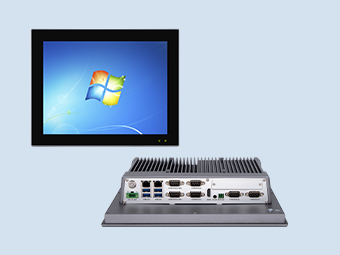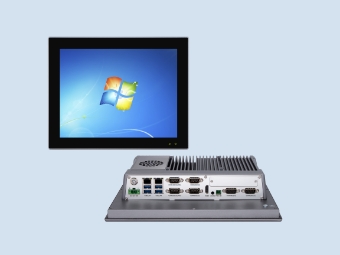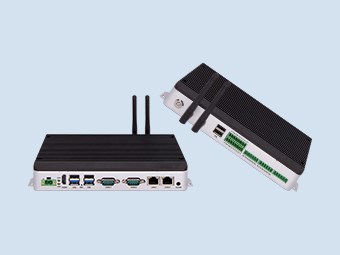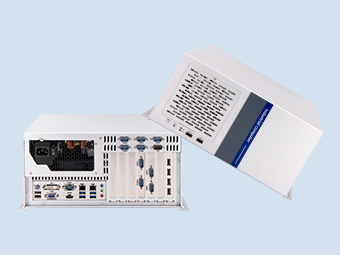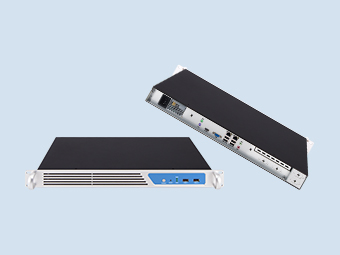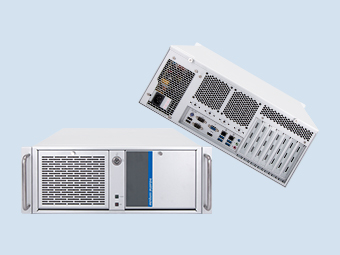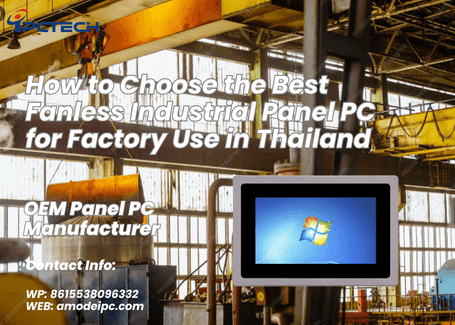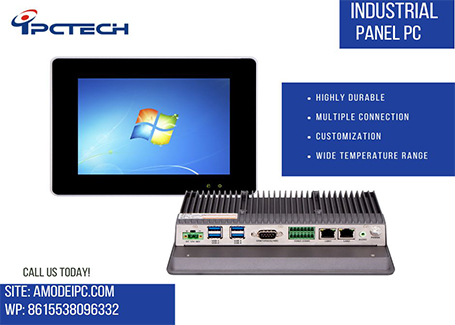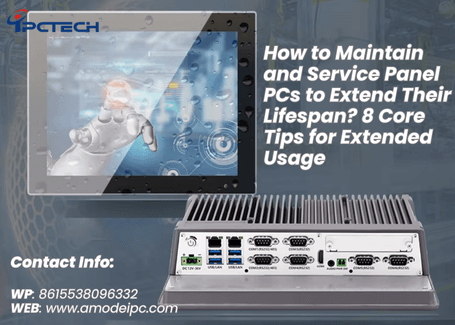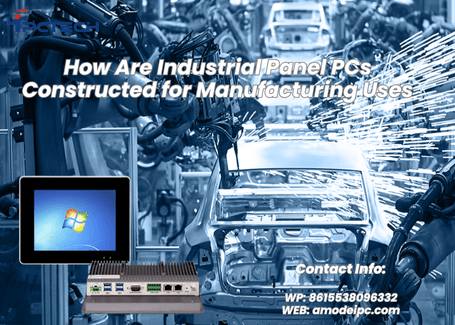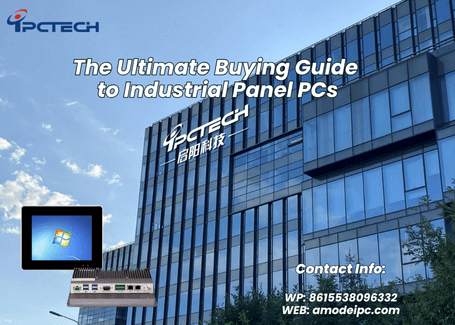How to Choose the Best Fanless Industrial Panel PC for Factory Use in Thailand
2025-09-15
Amid Thailand's booming manufacturing sector, industries such as automotive, electronics, and food processing increasingly demand high-efficiency production equipment. Fanless industrial tablets, leveraging their unique advantages, are gradually becoming core devices in factory operations. Unlike standard consumer-grade computers, factory environments expose equipment to extreme temperatures, dust, high humidity, and constant vibration—demanding exceptional durability and stability. Fanless designs address the common issues of dust accumulation and frequent failures in traditional fan-based systems, ensuring continuous, stable production.
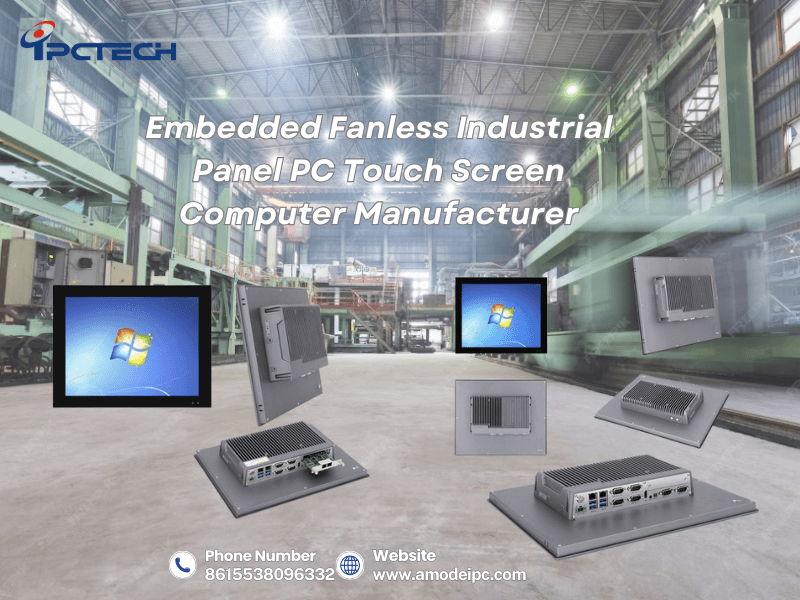
Thailand's tropical monsoon climate brings year-round high temperatures, with factory interiors often maintaining 30-40°C. During summer, some workshops exceed 45°C. The rainy season from June to October brings humidity levels of 70%-90%. Combined with temperature fluctuations caused by alternating air-conditioned factory interiors and outdoor heat, these conditions severely test the adaptability of fanless industrial tablets.
Extreme heat is the primary threat to equipment operation in Thai factories. Conventional computers are prone to crashes and hardware failures in such environments. Therefore, when selecting fanless industrial tablets, the operating temperature range is the foremost consideration. Prioritize models labeled for “wide-temperature operation from -20°C to 60°C.” These devices feature specialized thermal designs and optimized internal cooling structures to maintain stable performance in Thailand's factory heat. Even after 72 hours of continuous operation in a 40°C workshop, core component temperatures remain within safe limits, effectively preventing high-temperature-induced failures.
Thailand's rainy season brings high humidity, which can cause internal components to absorb moisture, leading to short circuits and corrosion. To address this, the device's protection rating is critical. For Thai factories, IP65 or IP66 protection is a fundamental requirement. IP65 signifies complete dust protection and resistance to low-pressure water jets from any direction. IP66 offers enhanced protection against stronger water jets, making it more suitable for factories with high humidity during the rainy season or those requiring water-based cleaning. When selecting equipment, carefully verify the protection rating certification in the product manual. Ensure the equipment housing features sealed gaskets at seams and waterproof/dustproof covers at interfaces to prevent moisture ingress at the source.
In Thai factories, air circulation between air-conditioned zones and high-temperature outdoor areas frequently occurs due to workshop ventilation needs or personnel movement, causing frequent temperature fluctuations in the equipment environment. Such temperature variations can cause condensation inside the equipment or compromise component stability due to thermal expansion and contraction. Therefore, high-quality fanless industrial tablets incorporate designs resistant to temperature fluctuations. This includes using components capable of withstanding extreme temperatures, applying moisture-resistant insulation coatings to circuit boards, and implementing optimized thermal management. These measures enable the equipment to adapt quickly to temperature changes, preventing performance degradation or failures caused by sudden temperature shifts.
In factory environments, issues like dust, oil contamination, and water splashes are commonplace. The protection rating of fanless industrial tablets directly determines their service life and stability.
In Thai factory settings, dust is a common contaminant, particularly in workshops like machining and building materials production. Accumulated dust can compromise heat dissipation efficiency and even cause component short circuits if it enters equipment. The first digit in an IP rating indicates dust protection, where “6” signifies complete dust protection—an essential requirement for factory equipment. The second digit indicates water resistance. A rating of “5” or “6” meets the waterproofing needs of most factories, protecting against splashes or low-pressure water jets during routine cleaning. It's important to note that certain factories, such as food processing workshops, frequently use high-pressure water jets to clean surrounding areas. In such cases, equipment with an IP67 rating should be selected, as it can withstand brief immersion in water without damage. When purchasing, avoid being misled by vague claims like “waterproof and dustproof.” Always verify the specific IP rating certification number and check for test reports from third-party testing organizations (such as TÜV or UL) to ensure the protection performance is genuine and reliable.
The display of a fanless industrial tablet PC serves as the core interface for factory operators to interact with equipment. The display size, touch technology, and visibility directly impact operational efficiency and user experience. The most suitable display configuration must be chosen based on the workshop layout, operational scenarios, and ambient lighting conditions at the Thai factory.
Different factory scenarios demand significantly varying display sizes. In compact workstations like automotive assembly lines or electronic component assembly, operators typically need to view equipment parameters and operating instructions at close range. In such cases, smaller displays ranging from 7 to 10 inches are more suitable. Compact screens occupy minimal space and can be flexibly mounted beside equipment or on workbenches, enabling operators to check and operate with ease. Conversely, scenarios like factory central control rooms or quality inspection centers—where multiple personnel share data or monitor multiple devices—require larger 15-21 inch displays. Larger screens display more monitoring views and data simultaneously, reducing interface switching frequency and enhancing monitoring efficiency. For example, an electronics factory's central control room employs 21-inch fanless industrial tablets to monitor 10 production lines' operational data. Operators can clearly view each line's real-time status without frequent zooming, significantly improving monitoring efficiency.
In Thai factories, operators face diverse work environments. Some require glove-wearing operations (e.g., assembly workers in automotive manufacturing or food processing staff), while others operate barehanded in relatively clean settings (e.g., electronic component inspection workshops). Therefore, appropriate touchscreen technology must be chosen according to specific operational scenarios.
For glove-wearing scenarios, resistive touchscreens are the superior choice. These screens detect touch commands through applied pressure, ensuring accurate response even with thick gloves. They offer lower cost, high durability, and withstand frequent factory-level touch operations. In clean environments, capacitive touchscreens demonstrate greater advantages. Capacitive touchscreens detect touch through sensing the body's electrical current. They offer fast response times, support multi-touch functionality, and provide a smoother user experience. This makes them suitable for scenarios requiring complex operations like rapid interface switching or image zooming. For instance, when quality inspectors review high-definition product inspection images, capacitive touchscreens deliver a more convenient operating experience. When selecting technology, it is crucial to determine whether operators will wear gloves and the complexity of the tasks involved to avoid compromising operational efficiency due to an inappropriate touchscreen choice.
Thailand's tropical climate delivers abundant sunlight year-round. Even with shade installations, factory workshops may experience direct sunlight or glare reflecting onto displays, obscuring content and disrupting operations. Thus, display brightness and anti-glare performance are critical. It is recommended to select displays with a brightness of 500 nits or higher. High-brightness screens clearly display content in bright environments, preventing issues like “glare obscuring visibility.” Additionally, the display surface should feature an anti-glare coating, which reduces light reflection and further enhances visibility.

Common operating systems in Thai factories include Windows 10/11 IoT Enterprise and Linux, with specific requirements varying by software system. Most are developed for Windows systems, requiring devices to support Windows 10/11 IoT Enterprise. Conversely, certain open-source MES systems or customized control software may run on Linux. During procurement, first identify the operating system versions supported by the factory's current software systems to ensure compatibility between the fanless industrial tablet's OS and the software. Additionally, verify that the operating system is genuine and eligible for long-term security updates and technical support to prevent data security risks or software malfunctions caused by system vulnerabilities.
Fanless industrial tablets in factories must connect to various hardware devices, such as barcode scanners for product traceability, PLCs for controlling production equipment, sensors for data acquisition, and printers for generating production reports. This necessitates a wide array of interfaces.
USB 3.0 ports are essential for their high-speed data transfer, supporting peripherals like barcode scanners, mice, and keyboards. At least 2-3 USB 3.0 ports are recommended to handle simultaneous connections of multiple devices. For Ethernet connectivity, Gigabit Ethernet enables real-time data transmission, ensuring low communication latency between industrial tablets and PLCs/servers. This is ideal for scenarios demanding high data real-time performance, such as real-time production line monitoring and quality data collection. For legacy PLC devices still in use within factories, RS-232/485 interfaces remain indispensable. These interfaces ensure stable communication with legacy equipment, preventing the need to replace existing devices due to interface incompatibility. Additionally, for large factories or scenarios requiring mobile monitoring, Wi-Fi 6 interfaces serve as a crucial supplement. With its high transmission speeds, extensive signal coverage, and strong interference resistance, Wi-Fi 6 enables wireless data transfer between industrial tablets and servers, reducing cabling costs and complexity. When selecting equipment, list all hardware devices requiring connection within the factory, verify their interface types and quantities, and ensure the industrial tablet's interface configuration meets actual needs.
As factory automation advances, new hardware or functionalities may be added—such as 4G/5G modules for remote monitoring, SSDs for expanded storage, or data acquisition cards for enhanced data collection. Therefore, fanless industrial tablets must reserve sufficient expansion slots.
PCIe expansion slots are common interfaces for installing network cards, acquisition cards, and similar devices. mSATA interfaces are suitable for expanding solid-state drives to increase storage capacity. When selecting equipment, pay close attention to the types and number of expansion slots to avoid future upgrade limitations due to insufficient slots. For example, a machinery manufacturing plant initially purchased fanless industrial tablets without considering the future need to add 4G modules for remote device monitoring. Since the purchased devices lacked reserved PCIe expansion slots, the plant had to repurchase new equipment supporting 4G functionality, incurring unnecessary additional costs.
The processing performance of fanless industrial tablets determines their ability to smoothly run factory software systems and handle complex production data, while energy efficiency impacts operational costs and thermal management demands. A balance between processing power and energy efficiency must be achieved based on the factory's specific application scenarios.
Different factory tasks demand varying levels of CPU performance. For industrial tablets used solely for basic tasks like production parameter monitoring and data entry, a low-power CPU suffices. Such CPUs feature low power consumption (typically under 10W), minimal heat generation, and require no additional cooling equipment. They align well with fanless designs while offering relatively low costs, making them suitable for large-scale deployment.
Conversely, scenarios requiring heavy-duty tasks like AI quality inspection software, complex SCADA systems, or concurrent multi-tasking demand higher-performance CPUs, such as the 11th Gen Intel Core i3/i5. These CPUs deliver superior computational power and multithreading capabilities, enabling rapid processing of large production datasets and complex algorithms to ensure smooth software operation. When selecting a CPU, avoid both “overkill” and “underperformance.” Overkill increases costs and power consumption, while underperformance compromises operational fluidity and efficiency.
Memory and storage devices significantly impact the operational speed of fanless industrial tablets. For memory configuration, 4GB generally suffices for basic monitoring and data entry tasks. However, to accommodate future software upgrades or concurrent multitasking, at least 8GB is recommended. For running AI software or large SCADA systems, 16GB is more suitable. Ample memory reduces data exchange latency, ensuring smooth software operation.
For storage devices, industrial environments demand high stability and durability. Traditional mechanical hard drives (HDDs) contain moving parts, making them prone to damage in vibrating environments and offering slower read/write speeds—unsuitable for factory settings. Therefore, industrial-grade solid-state drives (SSDs) should be prioritized. Industrial SSDs feature a mechanical-free design, offering superior vibration and shock resistance alongside fast read/write speeds. This significantly enhances device boot times and software loading speeds. Regarding storage capacity, a 128GB SSD suffices for basic system installation and software operation. For applications requiring extensive storage of production data, inspection images, or similar large datasets, SSDs with 256GB or higher capacity are recommended. Additionally, select SSDs supporting the TRIM function, as this feature optimizes read/write performance and extends the drive's lifespan.
Industrial electricity costs in Thailand are relatively high, and fanless industrial tablets typically require 24/7 continuous operation. The device's energy efficiency directly impacts long-term operational costs. The fanless design inherently offers energy savings by eliminating fan power consumption, while the use of low-power CPUs further reduces overall energy usage.
For Thai factories, selecting the right fanless industrial tablet PC is far more than simply purchasing equipment—it lays the foundation for production efficiency and stability. The high temperatures and humidity of Thailand's tropical climate, combined with dust and oil contamination in factory workshops, along with the 24/7 production demands of industries like automotive manufacturing and electronics processing, impose stringent requirements on equipment. IPCTECH's fanless industrial tablet PCs precisely address these critical challenges.
Core performance-wise, IPCTECH products fully align with Thai factories' practical needs: Full-body dustproof and waterproof construction (some models meet IP65 standards) withstands workshop dust and humid environments; The fanless design paired with an all-aluminum alloy heat dissipation structure prevents dust accumulation-induced failures while ensuring stable operation across a wide temperature range of -40°C to 70°C, effortlessly handling Thailand's high southern temperatures and northern temperature fluctuations. Multiple display sizes from 8 to 24 inches, along with capacitive/resistive dual touch options, adapt to diverse workstation requirements, enabling precise interaction whether for production line monitoring or material management. Crucially, its industrial-grade motherboard supports Intel Atom, Pentium, and Core series processors, allowing flexible selection based on factory automation system requirements (e.g., PLC integration, equipment data acquisition). It also features removable customizable interfaces for seamless integration with existing Thai factory electrical equipment and communication protocols.
For local Thai enterprises, the greatest advantage lies in IPCTECH's dedicated Thai agent—eliminating the headaches of cross-border procurement. The agent team offers on-site consultations, tailoring equipment solutions to specific industrial zones like Bangkok, Rayong, and Chonburi (e.g., anti-static requirements for electronics plants, hygiene standards for food factories). Local warehousing and distribution capabilities ensure rapid order fulfillment, preventing international logistics delays from impacting production line commissioning. Subsequent on-site technical support and maintenance services eliminate cross-border communication barriers and time costs, keeping equipment operating at peak efficiency.
Whether prioritizing environmental adaptability, performance stability, or the convenience of localized services, IPCTECH's fanless industrial tablets and Thailand agency services deliver a comprehensive “product + service” solution for your factory. Contact IPCTECH's Thailand agency today to initiate customized selection, ensuring industrial equipment truly aligns with Thai factory production needs and injecting reliable momentum into your digital manufacturing upgrade.

Prioritizing Adaptability to Thailand's Tropical Climate
Thailand's tropical monsoon climate brings year-round high temperatures, with factory interiors often maintaining 30-40°C. During summer, some workshops exceed 45°C. The rainy season from June to October brings humidity levels of 70%-90%. Combined with temperature fluctuations caused by alternating air-conditioned factory interiors and outdoor heat, these conditions severely test the adaptability of fanless industrial tablets.
Prioritizing High-Temperature Resistance
Extreme heat is the primary threat to equipment operation in Thai factories. Conventional computers are prone to crashes and hardware failures in such environments. Therefore, when selecting fanless industrial tablets, the operating temperature range is the foremost consideration. Prioritize models labeled for “wide-temperature operation from -20°C to 60°C.” These devices feature specialized thermal designs and optimized internal cooling structures to maintain stable performance in Thailand's factory heat. Even after 72 hours of continuous operation in a 40°C workshop, core component temperatures remain within safe limits, effectively preventing high-temperature-induced failures.
Enhancing Moisture Resistance
Thailand's rainy season brings high humidity, which can cause internal components to absorb moisture, leading to short circuits and corrosion. To address this, the device's protection rating is critical. For Thai factories, IP65 or IP66 protection is a fundamental requirement. IP65 signifies complete dust protection and resistance to low-pressure water jets from any direction. IP66 offers enhanced protection against stronger water jets, making it more suitable for factories with high humidity during the rainy season or those requiring water-based cleaning. When selecting equipment, carefully verify the protection rating certification in the product manual. Ensure the equipment housing features sealed gaskets at seams and waterproof/dustproof covers at interfaces to prevent moisture ingress at the source.
Stability Design for Temperature Fluctuations
In Thai factories, air circulation between air-conditioned zones and high-temperature outdoor areas frequently occurs due to workshop ventilation needs or personnel movement, causing frequent temperature fluctuations in the equipment environment. Such temperature variations can cause condensation inside the equipment or compromise component stability due to thermal expansion and contraction. Therefore, high-quality fanless industrial tablets incorporate designs resistant to temperature fluctuations. This includes using components capable of withstanding extreme temperatures, applying moisture-resistant insulation coatings to circuit boards, and implementing optimized thermal management. These measures enable the equipment to adapt quickly to temperature changes, preventing performance degradation or failures caused by sudden temperature shifts.
Verifying Industrial-Grade Protection Ratings
In factory environments, issues like dust, oil contamination, and water splashes are commonplace. The protection rating of fanless industrial tablets directly determines their service life and stability.
Defining Core Requirements for IP Ratings
In Thai factory settings, dust is a common contaminant, particularly in workshops like machining and building materials production. Accumulated dust can compromise heat dissipation efficiency and even cause component short circuits if it enters equipment. The first digit in an IP rating indicates dust protection, where “6” signifies complete dust protection—an essential requirement for factory equipment. The second digit indicates water resistance. A rating of “5” or “6” meets the waterproofing needs of most factories, protecting against splashes or low-pressure water jets during routine cleaning. It's important to note that certain factories, such as food processing workshops, frequently use high-pressure water jets to clean surrounding areas. In such cases, equipment with an IP67 rating should be selected, as it can withstand brief immersion in water without damage. When purchasing, avoid being misled by vague claims like “waterproof and dustproof.” Always verify the specific IP rating certification number and check for test reports from third-party testing organizations (such as TÜV or UL) to ensure the protection performance is genuine and reliable.
Selecting the Right Display Size and Touchscreen Technology
The display of a fanless industrial tablet PC serves as the core interface for factory operators to interact with equipment. The display size, touch technology, and visibility directly impact operational efficiency and user experience. The most suitable display configuration must be chosen based on the workshop layout, operational scenarios, and ambient lighting conditions at the Thai factory.
Determining Display Size Based on Factory Layout
Different factory scenarios demand significantly varying display sizes. In compact workstations like automotive assembly lines or electronic component assembly, operators typically need to view equipment parameters and operating instructions at close range. In such cases, smaller displays ranging from 7 to 10 inches are more suitable. Compact screens occupy minimal space and can be flexibly mounted beside equipment or on workbenches, enabling operators to check and operate with ease. Conversely, scenarios like factory central control rooms or quality inspection centers—where multiple personnel share data or monitor multiple devices—require larger 15-21 inch displays. Larger screens display more monitoring views and data simultaneously, reducing interface switching frequency and enhancing monitoring efficiency. For example, an electronics factory's central control room employs 21-inch fanless industrial tablets to monitor 10 production lines' operational data. Operators can clearly view each line's real-time status without frequent zooming, significantly improving monitoring efficiency.
Selecting Touchscreen Technology Based on Operational Scenarios
In Thai factories, operators face diverse work environments. Some require glove-wearing operations (e.g., assembly workers in automotive manufacturing or food processing staff), while others operate barehanded in relatively clean settings (e.g., electronic component inspection workshops). Therefore, appropriate touchscreen technology must be chosen according to specific operational scenarios.
For glove-wearing scenarios, resistive touchscreens are the superior choice. These screens detect touch commands through applied pressure, ensuring accurate response even with thick gloves. They offer lower cost, high durability, and withstand frequent factory-level touch operations. In clean environments, capacitive touchscreens demonstrate greater advantages. Capacitive touchscreens detect touch through sensing the body's electrical current. They offer fast response times, support multi-touch functionality, and provide a smoother user experience. This makes them suitable for scenarios requiring complex operations like rapid interface switching or image zooming. For instance, when quality inspectors review high-definition product inspection images, capacitive touchscreens deliver a more convenient operating experience. When selecting technology, it is crucial to determine whether operators will wear gloves and the complexity of the tasks involved to avoid compromising operational efficiency due to an inappropriate touchscreen choice.
Ensuring Visibility in High-Brightness Environments
Thailand's tropical climate delivers abundant sunlight year-round. Even with shade installations, factory workshops may experience direct sunlight or glare reflecting onto displays, obscuring content and disrupting operations. Thus, display brightness and anti-glare performance are critical. It is recommended to select displays with a brightness of 500 nits or higher. High-brightness screens clearly display content in bright environments, preventing issues like “glare obscuring visibility.” Additionally, the display surface should feature an anti-glare coating, which reduces light reflection and further enhances visibility.
Ensure Compatibility with Factory Software and Hardware

Fanless industrial tablets must work seamlessly with existing factory software systems and hardware equipment. Insufficient compatibility can lead to device malfunction and even disrupt entire factory production processes. Therefore, thoroughly evaluate the device's software and hardware compatibility during selection.
Verify Operating System Support for Factory Software
Common operating systems in Thai factories include Windows 10/11 IoT Enterprise and Linux, with specific requirements varying by software system. Most are developed for Windows systems, requiring devices to support Windows 10/11 IoT Enterprise. Conversely, certain open-source MES systems or customized control software may run on Linux. During procurement, first identify the operating system versions supported by the factory's current software systems to ensure compatibility between the fanless industrial tablet's OS and the software. Additionally, verify that the operating system is genuine and eligible for long-term security updates and technical support to prevent data security risks or software malfunctions caused by system vulnerabilities.
Equip with Sufficient Connectivity Interfaces
Fanless industrial tablets in factories must connect to various hardware devices, such as barcode scanners for product traceability, PLCs for controlling production equipment, sensors for data acquisition, and printers for generating production reports. This necessitates a wide array of interfaces.
USB 3.0 ports are essential for their high-speed data transfer, supporting peripherals like barcode scanners, mice, and keyboards. At least 2-3 USB 3.0 ports are recommended to handle simultaneous connections of multiple devices. For Ethernet connectivity, Gigabit Ethernet enables real-time data transmission, ensuring low communication latency between industrial tablets and PLCs/servers. This is ideal for scenarios demanding high data real-time performance, such as real-time production line monitoring and quality data collection. For legacy PLC devices still in use within factories, RS-232/485 interfaces remain indispensable. These interfaces ensure stable communication with legacy equipment, preventing the need to replace existing devices due to interface incompatibility. Additionally, for large factories or scenarios requiring mobile monitoring, Wi-Fi 6 interfaces serve as a crucial supplement. With its high transmission speeds, extensive signal coverage, and strong interference resistance, Wi-Fi 6 enables wireless data transfer between industrial tablets and servers, reducing cabling costs and complexity. When selecting equipment, list all hardware devices requiring connection within the factory, verify their interface types and quantities, and ensure the industrial tablet's interface configuration meets actual needs.
Reserve Expansion Slots for Future Upgrades
As factory automation advances, new hardware or functionalities may be added—such as 4G/5G modules for remote monitoring, SSDs for expanded storage, or data acquisition cards for enhanced data collection. Therefore, fanless industrial tablets must reserve sufficient expansion slots.
PCIe expansion slots are common interfaces for installing network cards, acquisition cards, and similar devices. mSATA interfaces are suitable for expanding solid-state drives to increase storage capacity. When selecting equipment, pay close attention to the types and number of expansion slots to avoid future upgrade limitations due to insufficient slots. For example, a machinery manufacturing plant initially purchased fanless industrial tablets without considering the future need to add 4G modules for remote device monitoring. Since the purchased devices lacked reserved PCIe expansion slots, the plant had to repurchase new equipment supporting 4G functionality, incurring unnecessary additional costs.
Evaluating Processing Performance and Energy Efficiency
The processing performance of fanless industrial tablets determines their ability to smoothly run factory software systems and handle complex production data, while energy efficiency impacts operational costs and thermal management demands. A balance between processing power and energy efficiency must be achieved based on the factory's specific application scenarios.
Selecting the Right CPU Based on Task Requirements
Different factory tasks demand varying levels of CPU performance. For industrial tablets used solely for basic tasks like production parameter monitoring and data entry, a low-power CPU suffices. Such CPUs feature low power consumption (typically under 10W), minimal heat generation, and require no additional cooling equipment. They align well with fanless designs while offering relatively low costs, making them suitable for large-scale deployment.
Conversely, scenarios requiring heavy-duty tasks like AI quality inspection software, complex SCADA systems, or concurrent multi-tasking demand higher-performance CPUs, such as the 11th Gen Intel Core i3/i5. These CPUs deliver superior computational power and multithreading capabilities, enabling rapid processing of large production datasets and complex algorithms to ensure smooth software operation. When selecting a CPU, avoid both “overkill” and “underperformance.” Overkill increases costs and power consumption, while underperformance compromises operational fluidity and efficiency.
Optimizing Memory and Storage Configuration
Memory and storage devices significantly impact the operational speed of fanless industrial tablets. For memory configuration, 4GB generally suffices for basic monitoring and data entry tasks. However, to accommodate future software upgrades or concurrent multitasking, at least 8GB is recommended. For running AI software or large SCADA systems, 16GB is more suitable. Ample memory reduces data exchange latency, ensuring smooth software operation.
For storage devices, industrial environments demand high stability and durability. Traditional mechanical hard drives (HDDs) contain moving parts, making them prone to damage in vibrating environments and offering slower read/write speeds—unsuitable for factory settings. Therefore, industrial-grade solid-state drives (SSDs) should be prioritized. Industrial SSDs feature a mechanical-free design, offering superior vibration and shock resistance alongside fast read/write speeds. This significantly enhances device boot times and software loading speeds. Regarding storage capacity, a 128GB SSD suffices for basic system installation and software operation. For applications requiring extensive storage of production data, inspection images, or similar large datasets, SSDs with 256GB or higher capacity are recommended. Additionally, select SSDs supporting the TRIM function, as this feature optimizes read/write performance and extends the drive's lifespan.
Prioritize Energy Efficiency
Industrial electricity costs in Thailand are relatively high, and fanless industrial tablets typically require 24/7 continuous operation. The device's energy efficiency directly impacts long-term operational costs. The fanless design inherently offers energy savings by eliminating fan power consumption, while the use of low-power CPUs further reduces overall energy usage.
IPCTECH-Industrial Panel PC Manufacturing
For Thai factories, selecting the right fanless industrial tablet PC is far more than simply purchasing equipment—it lays the foundation for production efficiency and stability. The high temperatures and humidity of Thailand's tropical climate, combined with dust and oil contamination in factory workshops, along with the 24/7 production demands of industries like automotive manufacturing and electronics processing, impose stringent requirements on equipment. IPCTECH's fanless industrial tablet PCs precisely address these critical challenges.
Core performance-wise, IPCTECH products fully align with Thai factories' practical needs: Full-body dustproof and waterproof construction (some models meet IP65 standards) withstands workshop dust and humid environments; The fanless design paired with an all-aluminum alloy heat dissipation structure prevents dust accumulation-induced failures while ensuring stable operation across a wide temperature range of -40°C to 70°C, effortlessly handling Thailand's high southern temperatures and northern temperature fluctuations. Multiple display sizes from 8 to 24 inches, along with capacitive/resistive dual touch options, adapt to diverse workstation requirements, enabling precise interaction whether for production line monitoring or material management. Crucially, its industrial-grade motherboard supports Intel Atom, Pentium, and Core series processors, allowing flexible selection based on factory automation system requirements (e.g., PLC integration, equipment data acquisition). It also features removable customizable interfaces for seamless integration with existing Thai factory electrical equipment and communication protocols.
For local Thai enterprises, the greatest advantage lies in IPCTECH's dedicated Thai agent—eliminating the headaches of cross-border procurement. The agent team offers on-site consultations, tailoring equipment solutions to specific industrial zones like Bangkok, Rayong, and Chonburi (e.g., anti-static requirements for electronics plants, hygiene standards for food factories). Local warehousing and distribution capabilities ensure rapid order fulfillment, preventing international logistics delays from impacting production line commissioning. Subsequent on-site technical support and maintenance services eliminate cross-border communication barriers and time costs, keeping equipment operating at peak efficiency.
Whether prioritizing environmental adaptability, performance stability, or the convenience of localized services, IPCTECH's fanless industrial tablets and Thailand agency services deliver a comprehensive “product + service” solution for your factory. Contact IPCTECH's Thailand agency today to initiate customized selection, ensuring industrial equipment truly aligns with Thai factory production needs and injecting reliable momentum into your digital manufacturing upgrade.
Recommended



